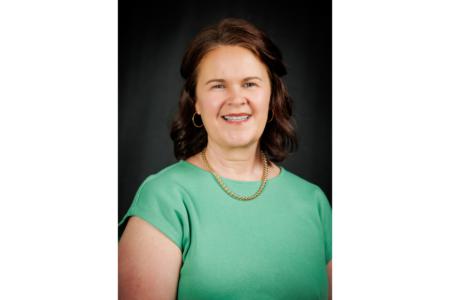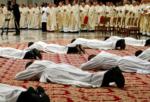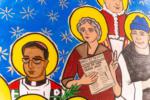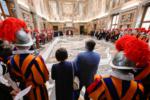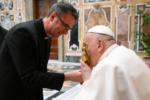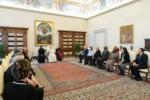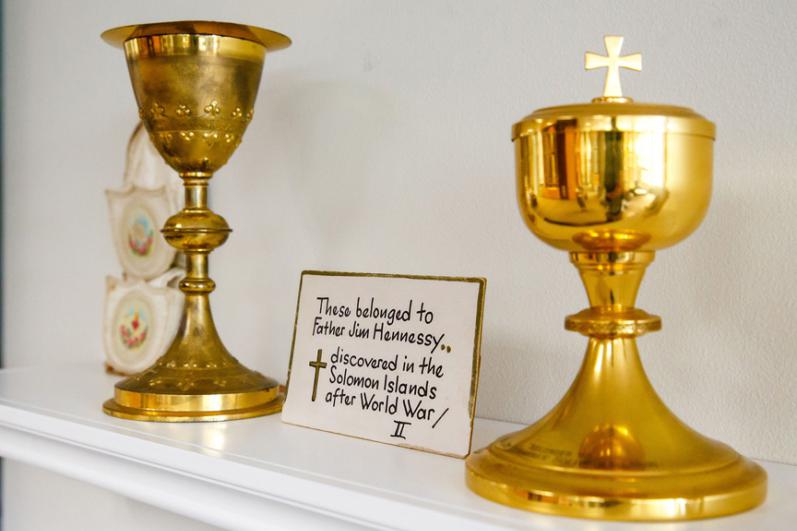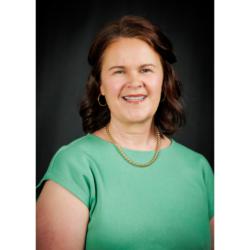The fate of lost WWII missionary Father Jim Hennessy
In 2016, the Archive Department featured an exhibit and article highlighting the life of Father Jim Hennessy, a Boston priest who gave his life serving as a missionary in the Solomon Islands. Over 80 years later, his story finally came to a conclusion this week, so we thought it worth sharing again and including this latest update.
James "Jim" Gerard Hennessy was born Sept. 24, 1905, in Cambridge. He attended St. Anselm's Preparatory School in New Hampshire and then graduated to the college, during which time he decided to leave and study for the priesthood.
Father Hennessy entered St. John's Seminary, Brighton, in 1925, and the following year, was one of three seminarians selected by Cardinal William O'Connell to continue their education at the North American College in Rome. Four years later, he completed his studies there and was ordained at the Basilica of St. John Lateran on Dec. 20, 1930.
Following ordination, Father Hennessy returned to Boston and served briefly at the Immaculate Conception in Malden before being reassigned to the Cathedral of the Holy Cross. At the cathedral, he worked alongside then Father Richard J. Cushing, director of the Propagation of the Faith, and encountered missionaries who visited seeking support. Their stories made a great impression on Father Hennessy, inspiring him to serve as a missionary.
Father Hennessy proposed that diocesan priests should be allowed to take a temporary leave of five years to serve as missionaries and was determined to be the first priest to do so, deciding that he would volunteer himself to the next missionary who visited the cathedral.
The next missionary was Bishop Thomas Wade, OMI, a native of Providence, Rhode Island, who oversaw missions in the Solomon Islands. He accepted Father Hennessy as a missionary, who was granted temporary leave in June 1936 and departed for his mission the following year.
Father Hennessy first settled at Chabai, Bougainville Island, where he established two schools, one to teach native catechists and the other for native children. Several of Father Hennessy's letters survive in the archive and provide insight into his success as a missionary.
On July 12, 1940, three years after his arrival, Father Hennessy continued to write enthusiastically about his work, stating, "I still like the life, and have never had reason to change our original idea. It would be a great thing if everybody could get the chance I have been so lucky (sic.) as to enjoy."
In another letter dated June 1, 1941, he reveals the success of his school, which had 70 students, fewer than the previous year, but admitted the smaller number made teaching easier. One year later, he offers another glimpse into his success, revealing that "two more boys have signified their intention of going to Seminary this year, and they will leave here in September, to join their two companions of last year. For the following year we already have one prospect, and a good one too."
Meanwhile, the world was at war, and a foreshadowing of events had been creeping into Hennessy's letters since 1940 when he wrote "Our Jap(anise) neighbors to the North are also a fly in everybody's soup in this part of the world." And later that year, "The war had made difficulties for the whole mission. Prices of things we must buy are so much higher than before, and at the same time all sources of aid from Europe are cut off."
Despite the challenges of his work, further exacerbated by the war, when his five-year period as a missionary expired, he appealed to stay until missionaries could be trained to replace him. His request was granted, but in the meantime, he was reassigned to Lemanmanu, Bougainville Island, part of Papua New Guinea. There, despite warnings from his fellow missionaries, he remained and was captured by Japanese troops on March 17, 1942 -- St. Patrick's Day.
For many years, Father Hennessy's fate remained a mystery. His two brothers both served in the Solomon Islands during World War II, and one, Frank, volunteered to return as Bishop Wade's secretary after the war, to both carry on his brother's work and hoping to determine his fate.
Meanwhile, by 1945, the now Archbishop Richard Cushing was losing hope that they would ever learn of Father Hennessy's fate and initiated the establishment of the Father Jim Hennessy Club in his memory. The club was an informal one, in which young men were recruited to serve as an audience to visiting missionaries, familiarize themselves with the missions, and offer whatever support they were able.
In 1947, a letter from the U.S. Navy to Frank Hennessy finally revealed that Father Hennessy was aboard a Japanese prison ship, the Montevideo Maru, when it was sunk by the submarine USS Sturgeon on July 1, 1942. The letter states, "the U.S. Submarine Commander who made the attack had no knowledge, of course, that this shop was carrying U.S. citizens or prisoners of war on board."
Now, over 80 years later, it was announced earlier this week that the wreck of the Montevideo Maru was discovered off the coast of the Philippines. An article by the BBC states that the ship is considered Australia's worst maritime disaster, killing an estimated 1,089 people on board; only three lifeboats were launched, containing 102 Japanese crew members and guards who rowed to safety.
With this discovery of his final resting place comes a certain amount of closure to the story of Father Jim Hennessy, and certainly to many others whose loved ones were lost aboard the Montevideo Maru. It is said the site will not be disturbed and that all human remains will be left as they lie over 4,000 meters below the surface.
For further reading, see www.bbc.com/news/world-australia-65356496.
- Thomas Lester is the archivist of the Archdiocese of Boston.
